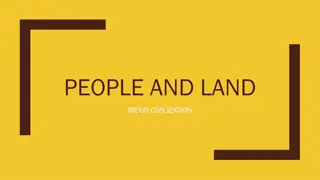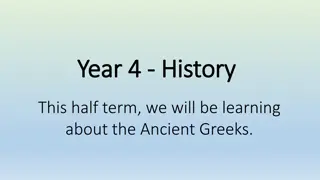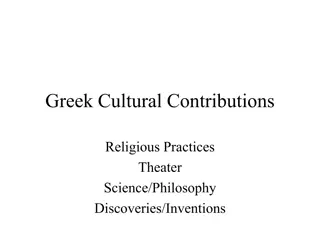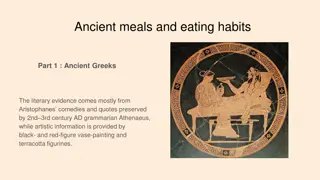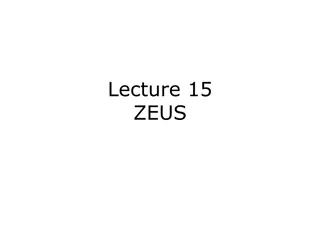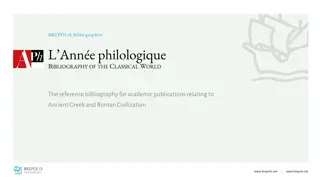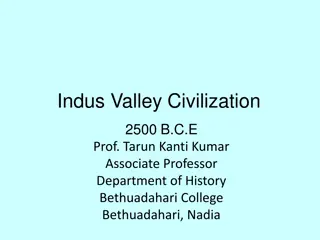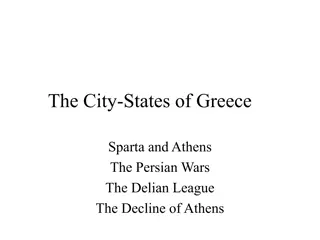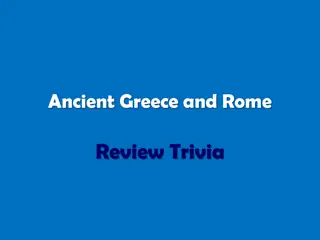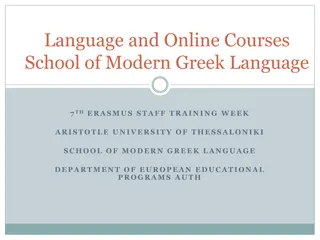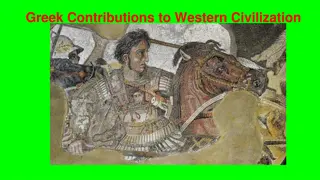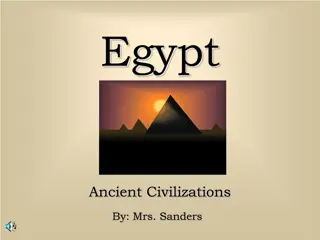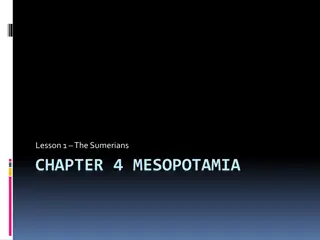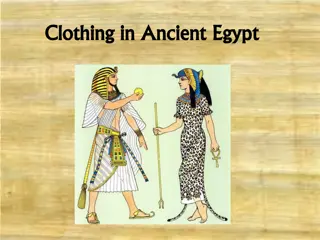Ancient Civilization of Europe: Island of Crete and Greek Culture
Island of Crete played a significant role in the history of Ancient Europe as a cultural bridge between Asia, Africa, and Europe. The civilization on Crete, known for its advanced arts, crafts, and writing, thrived before collapsing in the 15th century BC. The Greeks, located in southeastern Europe, developed notable architectural and artistic achievements during the Hellenistic period, including temples and literature attributed to Homer.
Download Presentation

Please find below an Image/Link to download the presentation.
The content on the website is provided AS IS for your information and personal use only. It may not be sold, licensed, or shared on other websites without obtaining consent from the author. Download presentation by click this link. If you encounter any issues during the download, it is possible that the publisher has removed the file from their server.
E N D
Presentation Transcript
Island of Crete civilization (2600-2000 BC) History of Ancient Europe originated from the island of Crete community life that lies south of the central government in Greek with Knossus. In addition there are still Knossus major cities other is Phaestos, Tylissos, Hanos. Crete is very strategic in the middle of the shipping lanes between Egypt, Greek and Mesopotamia.
Culture Crete became a cultural bridge between three continents, Asia, Africa and Europe, this continent each culture 3 acculturated. Crete community know Fresko painting, art porcelain / pottery, sculpture in ivory and other media and arts crafts metal. They also know the form of writing called writing minos / culture minoa
History of Island of Crete Derived from legends and mythology of literary works titled Homer's Iliad and Odysseia. Homer tells the beautiful scenic island of Crete, has no less 90 cities. This is evidenced by the archaeological evidence of the triumph of the island of Crete. Knossus found in the ruins of the palace in the form of labyrinth (cochlea).
Collapse In the 15th century BC collapse, caused by natural disasters, in addition to natural disasters suspected `German invasions of Central Asia. After the collapse Crete culture flourished on mainland Greek, initially located in the City of Mycena.
Greeks Geographical Location: Greek is the tip of southeastern Europe. Most of the islands in the Aegean and Ionian Sea entered Greek territory Population: Greeks formed from mixing the Caspian Sea nation of immigrants and natives and composed of farmers. They form a group - a group of town called Polis. Polis which are well-known: Athens, Sparta and Thebes.
Art In the Hellenistic period built many temples. And famous is the Acropolis and Temple of Zeus. They have also been able to build a theater that can accommodate 15,000 spectators. The Satra art was well developed. Author of the famous Greek literature is Homer with his work entitled Illyad. Greek Science: Greek has had a wide range of technologies, including: 1. Creating a sailboat. 2. Making stuff out of clay. 3. Producing works such as the Temple of Zeus arsitektus. 4. Develop industry and trade. 5. Produce metal objects for the war.
Government and Law Popular polis in Greece: 1. Athens led the Greek polis of years 450-404 BC, at this period of life in a democratic society, freedom of thought and work. And appear great philosophers famous: Socrates. 2. Polis Sparta, ruled Greece from the year 404 BC. The Spartans ruled Military and violence. At this time, the science does not evolve 3. Thebe policy ruled Greece 371 BC, Thebes defeated policyholder Spart between these policies are always fighting and eventually became salve. Greece became controlled by King Philip of Macedonia in 338-336 BC.
Philosophy Results of thought and philosophical works of the Greek, has been translated and studied until now . The greek philosopher who was drafter laid the foundations of natural philosophy of mind philosophy Europe. Greek philoshopy were translated and interpreted by Islamic philosophers , and through the Islamic satra. Greek philosophical thought went into Persian and other Asian countries . Characteristics Greek philosophy : Methods to think logically , rationally and systematically How the investigation of natural phenomena down to the details . This philosophy produces real results in terms of natural and social sciences . Greek philosopher: Socrates , with his doctrine of Policy Studies (philosophy ethics) with logic or morality as a basis for discussing them Plato , with his doctrine of constitutional science and law reserved Aristotle , with his teaching in the fields of biology and philosophy so often referred to as a biologist and philosophy Hippocrates , the teaching physician regarding the code of ethics ( oath )
The Belief The belief of the Greek: Trust the Greek are worshiping idols, including: Zeus, father of the gods of heaven and earth Hera, goddess of marriage Ares, god of war Hermes, the god of trade Aphrodite, goddess beauty
Rome Geographical Location: Roman is an ancient place in Europe is the source of Western culture. Located in Apenina Peninsula (now Italy). Its boundaries are: Northern peninsula with mainland Europe continued Apenina contained Alps as a natural boundary that extends. Next to the Northwest that separates Italy with France. separating Northern Italy with Switzerland and Austria. Next the Northeast with Yugoslavia.
The development of Rome History (a) Period 1000-510 BC Age of Kingdom During this period Apenina peninsula is inhabited by a nation of immigrants from the Caspian Sea, while in the southern part of the nation inhabited by Phoenicians and Greeks. Among them occurring mixture that gave birth to the Romans City of Rome was founded by Vergilius Aenens in his work, the city of Rome was founded in 1754 BC. The city of Rome was founded by Romulus Aeneis child and daughter of Latinus Lavinia (king of Latinum) who had killed his twin brother Remus. Kingdom of Rome ruled a king who doubles as a warlord and high court judges. In carrying reign of King assisted by the Senate, which comprises 300 patricier class (nobility). Rome became the Republican-controlled state nobility (aristocracy)
(b) Period of the Republic Period 510 BC -31? During this period shaped Roman Republic whose government is run by two people who elected consul. Then the board was formed comprising: Senate, namely the nobility House of Representatives, the majority of the nobility, only 4 classes of ordinary people. And this guy has 4 Veto. Often conflicts between the nobility and the common people so that layers of people to flee to the mountains. This causes suffering nobility. Consequently layers of people called and held negotiations to produce an agreement for equal rights set forth in the "Twaalftafelenwet" which is 12 stone table legislation.
(C) Period 31 BC - 476 AD Age of Empire Emperors who once ruled is: Emperor Octavian the title of Augustus Caesar and Princeps Civitas (highest citizens elected, fair and wise) is the foundation stone of the Roman Empire. Its territory covers North Africa, West Asia, and most of Eropa.Kaisar Octavian ruled until AD 14, important thing that he inherited AD is the start date that coincides with the birth of Jesus. The next Roman Emperor Nero (54-68 BC), Emperor Nero famously ruthless and kill the Christians. Emperor Caligula, notorious Vesvasianus Emperor (69-79 AD), famous for its oppression of the Jews in Palestine, so that the Jews were expelled from the country and spread all over the world Hardianus Emperor (117-138 AD) Emperor Constantine the Great (306-337M) Emperor Theodosius (378-395M).?
At the time of the Roman Theodosius divided into two: the Western Roman capital of the Roman and Byzantine capital of Constantinople. Western Roman fell in 476 AD by Odoakar a German mercenary commander, Byzantines fell in 1453 AD to the Turks and turned into Istanbul.
Culture Roman culture is a blend of the ancient Greek and Roman culture. For example: Names of Gods: Zeus replaced Jupiter, Venus Aphrodite replaced, replaced Ares Mars. The names of the months: A) January = Jenus the god of duplicity, B) February = februa are welcome dinner party new Year and Roman numerals c) September = Septe which means 7 d) October = Okto which means 8.? e) At the time of Julius Caesar changed the order of months because he wanted to include his name in July = 7 f) Once period also Octavianus, August = 8. This leads to a sequence of months. State and Military Organizations, education, art, philosophy of science, and the law (Justinian Codex)



